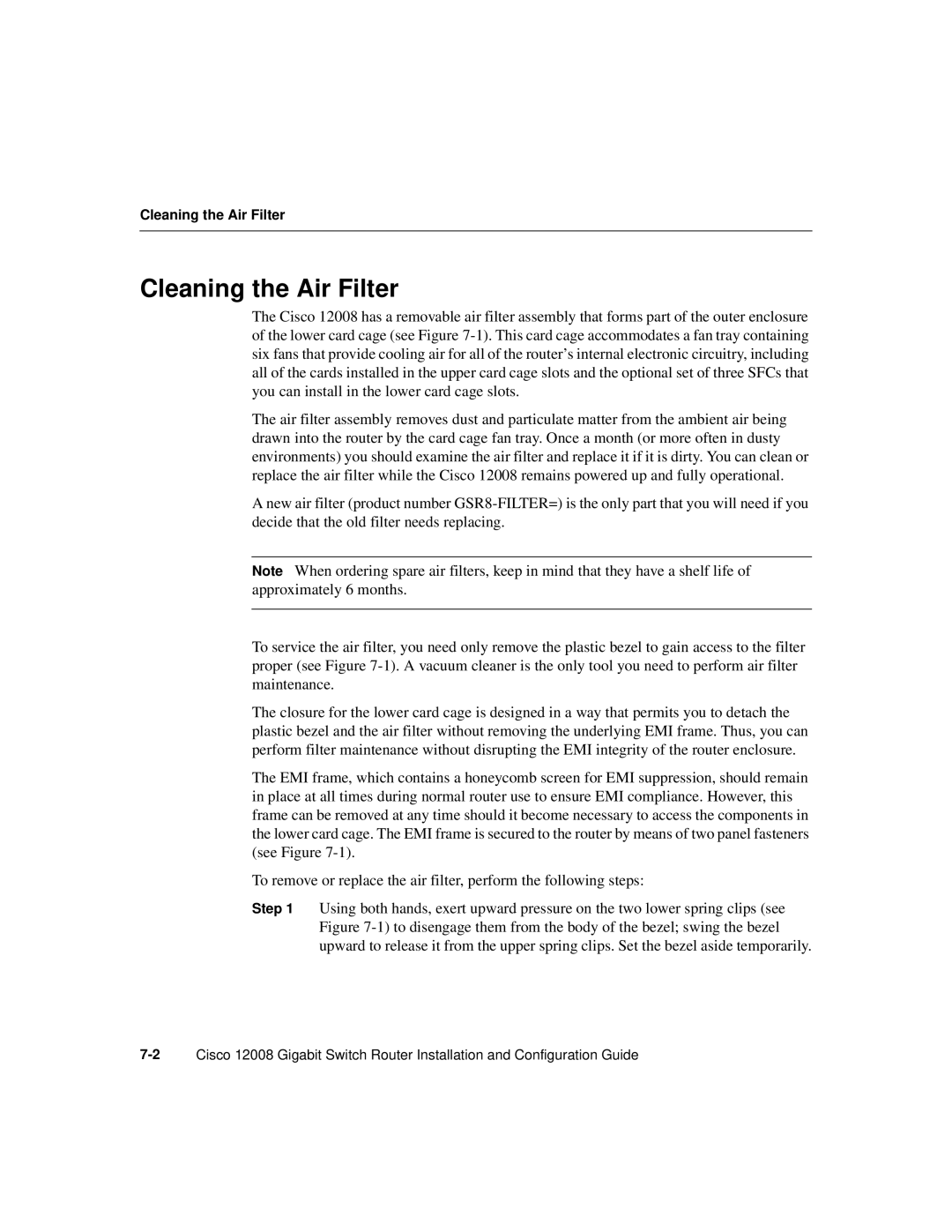
Cleaning the Air Filter
Cleaning the Air Filter
The Cisco 12008 has a removable air filter assembly that forms part of the outer enclosure of the lower card cage (see Figure
The air filter assembly removes dust and particulate matter from the ambient air being drawn into the router by the card cage fan tray. Once a month (or more often in dusty environments) you should examine the air filter and replace it if it is dirty. You can clean or replace the air filter while the Cisco 12008 remains powered up and fully operational.
A new air filter (product number
Note When ordering spare air filters, keep in mind that they have a shelf life of approximately 6 months.
To service the air filter, you need only remove the plastic bezel to gain access to the filter proper (see Figure
The closure for the lower card cage is designed in a way that permits you to detach the plastic bezel and the air filter without removing the underlying EMI frame. Thus, you can perform filter maintenance without disrupting the EMI integrity of the router enclosure.
The EMI frame, which contains a honeycomb screen for EMI suppression, should remain in place at all times during normal router use to ensure EMI compliance. However, this frame can be removed at any time should it become necessary to access the components in the lower card cage. The EMI frame is secured to the router by means of two panel fasteners (see Figure
To remove or replace the air filter, perform the following steps:
Step 1 Using both hands, exert upward pressure on the two lower spring clips (see Figure
